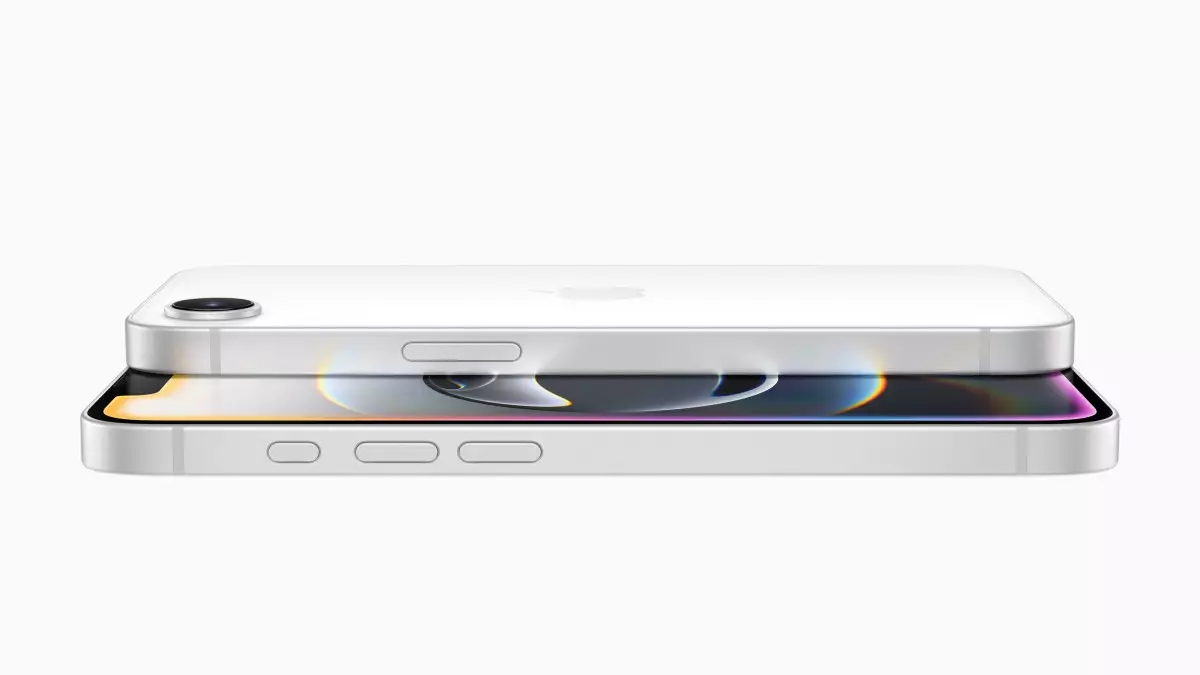Apple’s latest move in the smartphone arena has captured considerable attention with the unveiling of the iPhone 16e, a refresh that deviates from its traditional iPhone SE branding. As the fourth iteration of a series that has long catered to budget-conscious consumers, the iPhone 16e finds itself introduced three years after the previous major update, marking a pivotal strategic shift for Apple. While the device aims to maintain affordability, it clearly aligns more with the premium offerings from the tech giant.
The most noticeable change with the release of the iPhone 16e is the elimination of the SE moniker, signaling a drift towards solidifying a unified branding approach that mirrors the flagship iPhone lineup. The device is priced at $599, which not only represents a $100 increase from the last SE variant but also suggests that Apple is aiming to elevate its budget models into a more competitive space. This transition is crucial as Apple seeks not merely to compete but to assert dominance in key emerging markets, notably in regions where it has experienced market share slips, such as China.
One of the standout features of the iPhone 16e is the inclusion of Apple Intelligence, a proprietary AI tool that positions the device alongside competitors like OpenAI’s ChatGPT and Google’s Gemini. By integrating on-device capabilities for text summary generation, letter writing, and even image creation, Apple fortifies the 16e’s standing within the tech landscape. This feature is made accessible through Siri without the need for an OpenAI account, showcasing Apple’s commitment to providing a seamless user experience.
Underpinning these advanced functionalities is the A18 processor, which not only boosts performance but also enables users to engage with the Apple Intelligence suite effectively. This in-house chip sets the 16e apart from its predecessors and highlights Apple’s ongoing effort to rely less on third-party chip manufacturers, emphasizing their investment in proprietary technology.
The design of the iPhone 16e steers away from legacy features like the Touch ID home button and transitions to a Face ID setup. The return of a camera notch reminiscent of the iPhone X, combined with a switch to USB-C from the traditional Lightning port, points toward a thoughtful harmonization of Apple’s hardware ecosystem. The larger 6.1-inch OLED display offers enhanced visuals, while Apple boasts that this model delivers its best battery life—up to 12 hours longer on a single charge compared to previous SE models. This improvement, largely attributed to the efficiency of the A18 chip, is poised to attract new users who prioritize longevity in their smartphones.
Camera enhancements are also a central feature of the 16e. With a 48-megapixel rear camera capable of 2x zoom and a two-in-one functionality that also allows for 24-megapixel shots, this device places a premium on photography. The front-facing TrueDepth camera supports facial recognition, ensuring that the device’s biometric capabilities are on par with current market expectations.
The timing of the iPhone 16e’s launch is particularly important for Apple, which faces notable challenges in regions like China. With market share dropping by 11%, largely due to emerging competition from local manufacturers like Huawei, Apple needs the 16e to perform well in this critical market. Notably, Apple also confronts challenges with its AI features not being readily available in mainland China, although recent partnerships with major Chinese firms could signal future enhancements.
While the iPhone SE series has traditionally succeeded in emerging markets such as India and China, the irregular timeline of its releases contrasts sharply with the annual flagship cycles. However, with this new offering, Apple appears poised to seize opportunities for recovery and growth in regions crucial to its business.
The launch of the iPhone 16e illustrates a strategic gamble by Apple—by repositioning a budget phone to align more closely with flagship models, they stand to attract both new users and loyal customers seeking a more advanced smartphone experience at a lower price point. As pre-orders open on February 21, and shipments begin shortly thereafter, the industry will watch closely to see if this gamble translates into renewed momentum for Apple in vital markets. The iPhone 16e might just be the catalyst Apple needs to regain its foothold amidst increasing competition.

